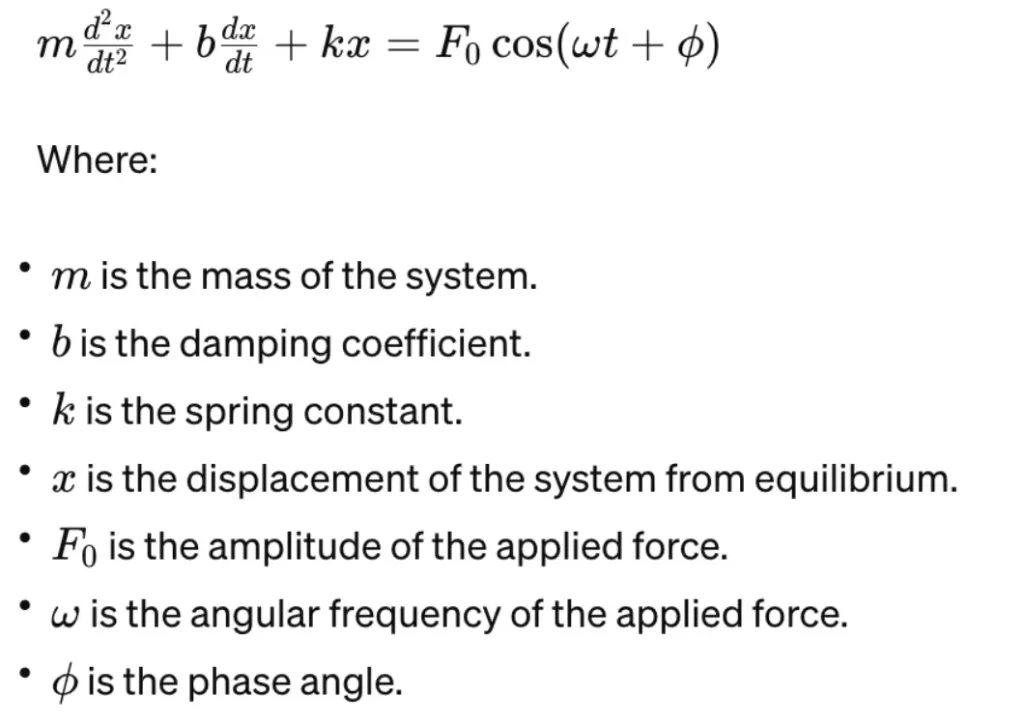Oscillation, the repetitive variation typically observed in physical systems, plays a fundamental role in numerous natural phenomena and engineered systems. It manifests in a wide array of contexts, from the swaying of a pendulum to the vibration of a guitar string. One particularly intriguing aspect of oscillations is the concept of forced oscillations, where an external force drives the system to oscillate with a frequency that may differ from its natural frequency. Understanding forced oscillations is crucial in diverse fields such as physics, engineering, biology, and even economics. In this article, we delve into the intricacies of forced oscillations, exploring their characteristics, underlying principles, and real-world applications.
Fundamentals of Oscillation
Before delving into forced oscillations, it’s essential to grasp the basics of oscillatory motion. An oscillation refers to the repetitive motion of a system around an equilibrium position. This motion typically occurs due to the presence of a restoring force, which tends to bring the system back to its equilibrium when displaced.
A classic example of oscillatory motion is a mass attached to a spring. When the mass is displaced from its equilibrium position, the spring exerts a force proportional to the displacement, directed towards the equilibrium point. This force acts as the restoring force, causing the mass to oscillate back and forth around the equilibrium.
Introduction to Forced Oscillations
Forced oscillations occur when an external force is applied to a system undergoing oscillatory motion. Unlike natural oscillations, where the system oscillates at its natural frequency determined by its intrinsic properties, forced oscillations involve an external influence dictating the frequency of oscillation.
Characteristics of Forced Oscillations
Forced oscillations exhibit several distinctive characteristics:
- Frequency of External Force: In forced oscillations, the frequency of the external force driving the oscillations may differ from the natural frequency of the system. This results in the system oscillating at the frequency of the external force rather than its natural frequency.
- Amplitude Response: The response of the system to the external force depends on various factors, including the frequency and amplitude of the applied force, as well as the system’s damping characteristics. At resonance, where the frequency of the external force matches the natural frequency of the system, the amplitude of oscillation can dramatically increase, leading to resonance phenomena.
- Phase Relationship: The phase relationship between the applied force and the resulting oscillation is another critical aspect of forced oscillations. The phase difference determines whether the system’s displacement leads or lags behind the applied force.
Mathematical Representation
Mathematically, forced oscillations can be described using differential equations, typically in the form of second-order linear differential equations. The equation of motion for a damped forced harmonic oscillator can be expressed as:

Solving this differential equation provides insights into the behaviour of the system under forced oscillations, including the amplitude and phase response as a function of the frequency of the applied force.
Real-World Applications
Forced oscillations find applications across various fields:
- Electronics: In electronic circuits, forced oscillations are utilized in devices such as oscillators and radio transmitters, where an external signal drives the circuit to oscillate at a desired frequency.
- Mechanical Engineering: Forced oscillations are prevalent in mechanical systems subjected to periodic external forces, such as machinery, bridges, and buildings. Understanding forced oscillations helps engineers design structures capable of withstanding external vibrations.
- Biomechanics: In biological systems, forced oscillations play a role in phenomena like heartbeats and muscle contractions, where external stimuli drive rhythmic motion.
- Control Systems: Forced oscillations are studied extensively in control theory to analyse and design systems capable of responding to external inputs while maintaining stability and performance.
Conclusion
Forced oscillations represent a fascinating aspect of oscillatory motion, where external forces influence the dynamics of a system. Understanding forced oscillations is crucial for various applications across physics, engineering, biology, and other disciplines. By exploring the characteristics, mathematical representations, and real-world applications of forced oscillations, researchers and engineers can harness this phenomenon to develop innovative solutions and deepen our understanding of complex systems.




